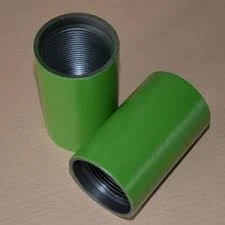- Afrikaans
- Albanian
- Amharic
- Arabic
- Armenian
- Azerbaijani
- Basque
- Belarusian
- Bengali
- Bosnian
- Bulgarian
- Catalan
- Cebuano
- Corsican
- Croatian
- Czech
- Danish
- Dutch
- English
- Esperanto
- Estonian
- Finnish
- French
- Frisian
- Galician
- Georgian
- German
- Greek
- Gujarati
- Haitian Creole
- hausa
- hawaiian
- Hebrew
- Hindi
- Miao
- Hungarian
- Icelandic
- igbo
- Indonesian
- irish
- Italian
- Japanese
- Javanese
- Kannada
- kazakh
- Khmer
- Rwandese
- Korean
- Kurdish
- Kyrgyz
- Lao
- Latin
- Latvian
- Lithuanian
- Luxembourgish
- Macedonian
- Malgashi
- Malay
- Malayalam
- Maltese
- Maori
- Marathi
- Mongolian
- Myanmar
- Nepali
- Norwegian
- Norwegian
- Occitan
- Pashto
- Persian
- Polish
- Portuguese
- Punjabi
- Romanian
- Russian
- Samoan
- Scottish Gaelic
- Serbian
- Sesotho
- Shona
- Sindhi
- Sinhala
- Slovak
- Slovenian
- Somali
- Spanish
- Sundanese
- Swahili
- Swedish
- Tagalog
- Tajik
- Tamil
- Tatar
- Telugu
- Thai
- Turkish
- Turkmen
- Ukrainian
- Urdu
- Uighur
- Uzbek
- Vietnamese
- Welsh
- Bantu
- Yiddish
- Yoruba
- Zulu
Understanding Seamless Pipe Manufacturing and Its Applications in Industrial Projects
Seamless Pipes An Overview of Their Importance and Applications
Seamless pipes have emerged as a crucial component in various industries due to their unique properties and advantages. Unlike welded pipes, seamless pipes are manufactured through a process that does not involve any joints, making them stronger and more reliable under high pressure and temperature conditions. The production of seamless pipes begins with a solid round steel billet, which is heated and then pierced to create a hollow tube. This tube is subsequently elongated and reduced in diameter through further processing, resulting in a seamless product.
One of the primary benefits of seamless pipes is their structural integrity. The absence of seams ensures that there are no weak points, which makes them less prone to failure under stress. This characteristic is particularly valuable in high-pressure applications, such as in the oil and gas industry, where pipelines are subjected to extreme conditions. When a seamless pipe is used, the risk of leaks or ruptures is significantly minimized, thus enhancing safety and reliability in operations.
Seamless pipes are manufactured in various materials, including carbon steel, stainless steel, and alloy steel, which allows for versatility in application. Each material offers distinct properties suitable for different environments. For instance, stainless steel seamless pipes are resistant to corrosion and oxidation, making them ideal for chemical processing industries. In contrast, carbon steel pipes are commonly used in construction and mechanical applications due to their strength and durability.
The applications of seamless pipes are vast, spanning several sectors
. In the oil and gas industry, they are extensively used for drilling, casing, and tubing. The ability of seamless pipes to withstand high pressure makes them indispensable for transporting crude oil and natural gas over long distances. Similarly, in the construction sector, these pipes are utilized for structural purposes, including scaffolding and frameworks, as well as in HVAC systems.seamless pipe

Another important application of seamless pipes is in the automotive industry. They are used to manufacture components such as hydraulic cylinders, which require high precision and durability. The seamless design of these pipes allows for better performance and longer lifespan in automotive systems, where failure can lead to serious safety hazards.
Moreover, seamless pipes are also prevalent in the water supply and sewage systems. Their resistance to wear and tear, along with their ability to withstand varying temperatures, makes them ideal for both above-ground and underground piping systems. In addition, seamless pipes are easier to install due to their uniformity and lack of welds, which can save time and reduce costs in construction projects.
Sustainability is a growing concern in today's industrial landscape, and seamless pipes can contribute positively to environmental goals. Their robust design often leads to less waste and a longer lifespan compared to welded alternatives. Furthermore, advancements in manufacturing processes have improved their energy efficiency, aligning with the global push for more sustainable practices.
In conclusion, seamless pipes play a pivotal role in various industries due to their strength, reliability, and versatility. Their applications range from oil and gas to construction, automotive, and water management, demonstrating their importance in modern infrastructure. As industries continue to evolve, the demand for high-quality seamless pipes is likely to grow, driven by the need for safer, more efficient, and durable piping solutions. The ongoing advancements in manufacturing technology also promise to enhance the performance and sustainability of seamless pipes, ensuring that they remain a vital component in the industrial landscape for years to come.
-
Well Casing Extension Couplings – Applications and InstallationNewsJun.06,2025
-
Types of Crossover Subs in Drilling & CompletionNewsJun.06,2025
-
Key Features of High-Quality Tubing Pup JointsNewsJun.06,2025
-
Installation and Maintenance Tips for Steel Couplings for PipeNewsJun.06,2025
-
How to Select the Right Pup Joint for Oil & Gas OperationsNewsJun.06,2025
-
Applications of Stainless Steel Pipe CouplingsNewsJun.06,2025







